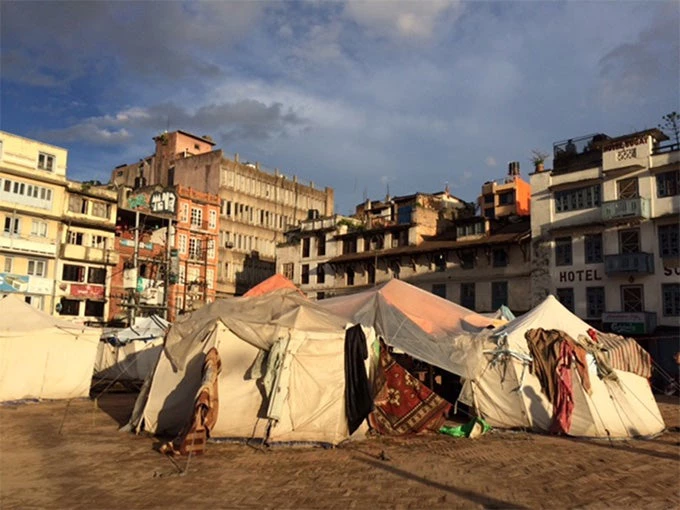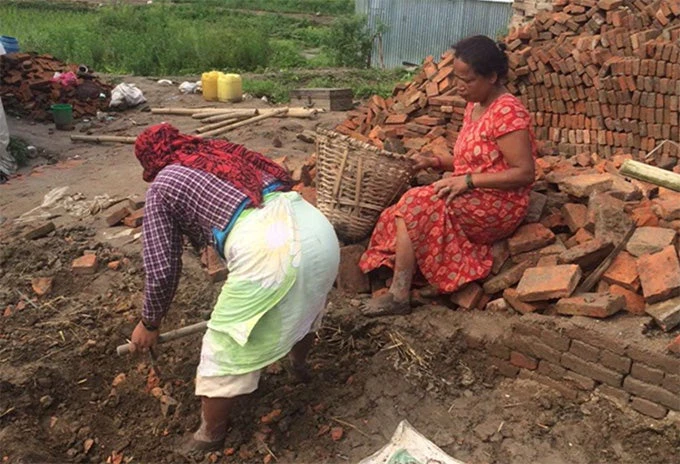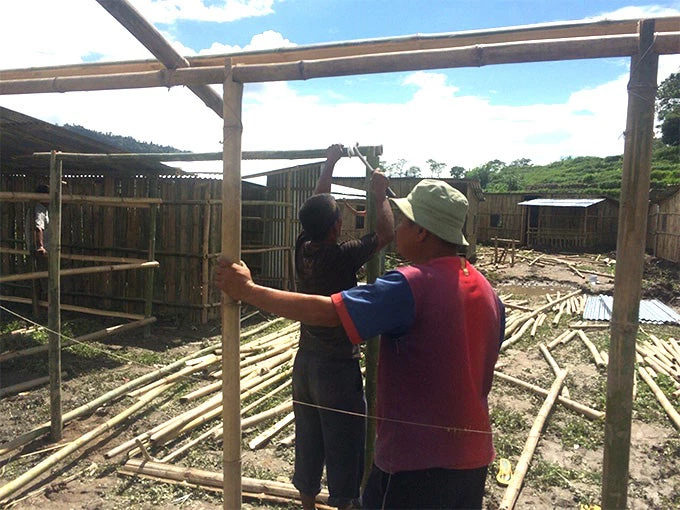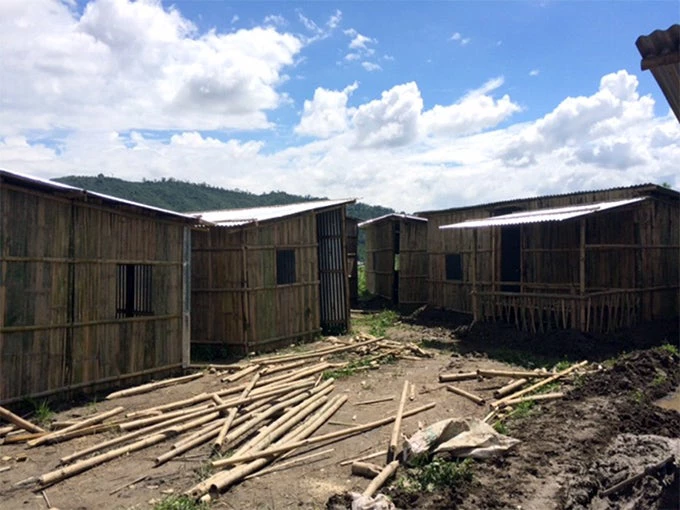Nobody remembers an earthquake or a disaster this severe in their living memory. Aftershocks continue three months after the first earthquake, reminding survivors of their fragile, transitory existence. The scale of destruction is enormous, the remains visible even after efforts to clean, rebuild, and resettle. Gaping cracks in abandoned buildings waiting to collapse, tents in fields and pavements, parked vehicles that become shelters at night, rubble too enormous to be lifted to a landfill site, the occasional bulldozer – are all grim reminders of the tragedy. The skyline, once dominated by terracotta temples with tiered pagoda roofs, now is made up only of concrete masonry buildings.
The monsoon is currently in full swing and the urgency to rebuild and prepare secure shelters for the displaced mounts to a frenzy. 2.8 million people have been displaced by this tragedy and providing shelter to all is a task of Himalayan proportions. In Sankhu, a Newar town 20 km from Kathmandu, paddy fields have been cleared to accommodate temporary bamboo shelters. As the rubble will take a while to clear, fields provide the best option to accommodate the displaced. Sponsored by Amina a Japanese knitwear company, and designed and constructed by Arjun Adhikari, these 22 modest homes are topped with tin roofs and tarp for waterproofing. The interior bamboo walls are coated with a mixture of mud, cowdung, and straw for insulation and cost about NPR 45,000 ($450) to build. These homes will last five years during which time people will have saved enough to move to permanent structures. Four masons work through the day, fixing these up. Families that will occupy these homes help with the work. A larger shelter serves as the common room for these families that also use it for activities like knitting and embroidery that is purchased by Amina. “Over 100 families wanted me to build them houses, but we did not have funds and we really had to prioritise,” Arjun laments. 90% of the town was destroyed in the earthquake. This includes the ancient Bajrayogini temple, Sankhu’s most important monument.
Back in Kathmandu, there is optimism at Camp Hope. 355 people from Sindhupalchowk – the epicentre of the earthquake – have been accommodated in 17 tents on a football field. These people belong to the Sherpa and Tamang communities and have been adopted by Dwarika’s – a well known hotel. Despite the hardship and displacement, there is camaraderie and energy in the camp as people line up for dinner. This is because people in the camp are focusing on returning to their village. Plans are in place to resettle these communities. Sangita Shrestha, Dwarika’s proprietor, shares her vision of reconstructing homes and restoring livelihoods using local design but earthquake-resistant construction. “We will make these villages so attractive that they will be back on the tourist map,” she says. While they approach donors for funding, all 81 children in the camp have been enrolled in school, free of cost. Women are receiving training in skills and literacy. The men do maintenance and repair work and are also learning to read and write. Dawa Sherpa, a guide who took groups trekking around the country is now at Camp Hope. His home destroyed, he smiles as he reflects: “This tragedy has given us all an opportunity. I could never have imagined that my children will study in such a good school in Kathmandu. And I could never have thought I would rebuild my own village. I know that in two years, we will have more tourists than Switzerland.”






Join the Conversation